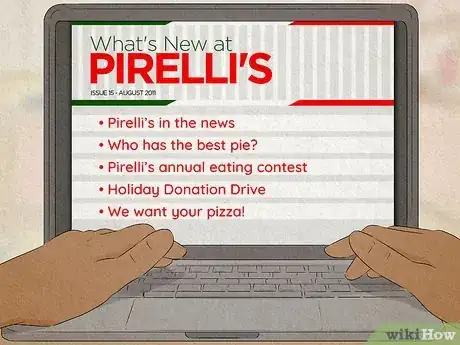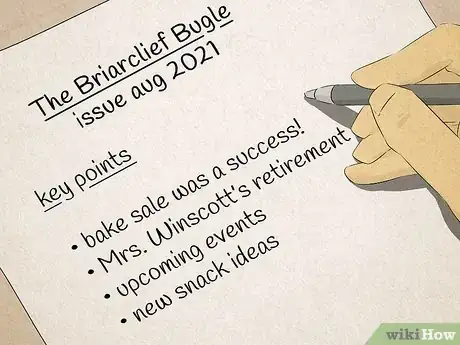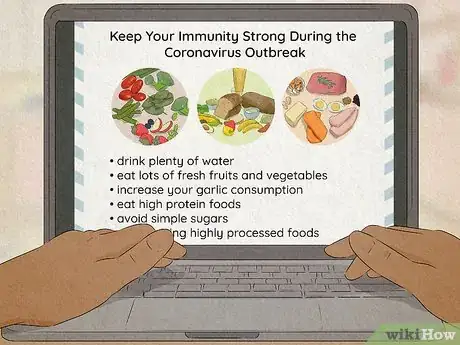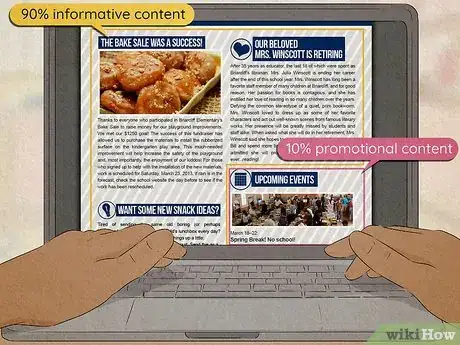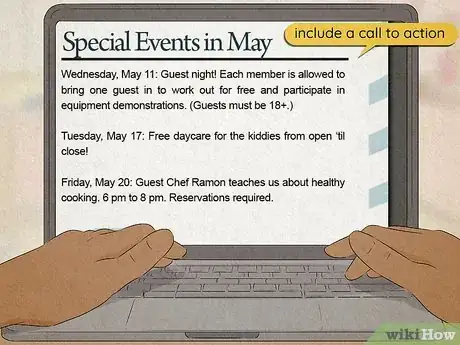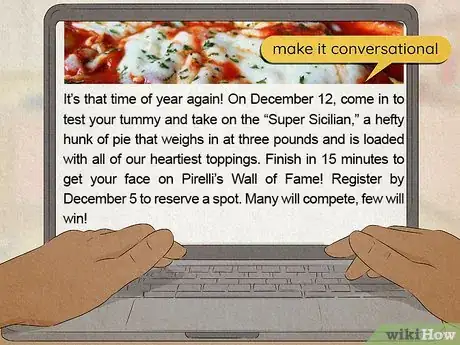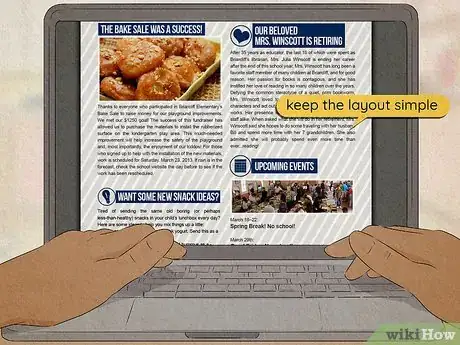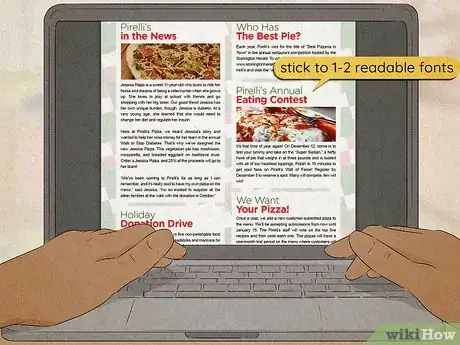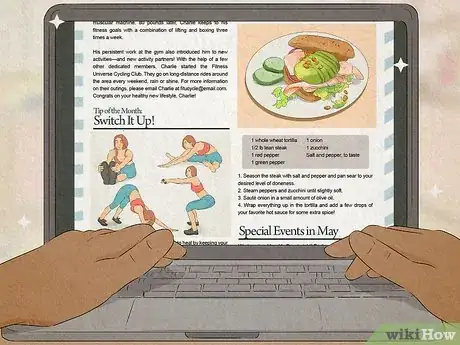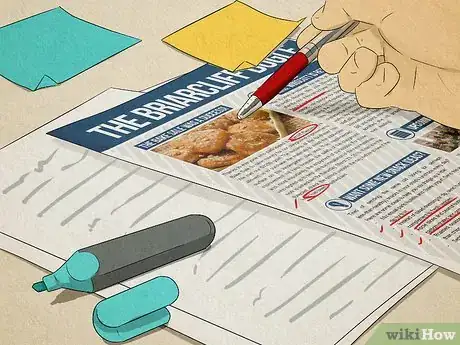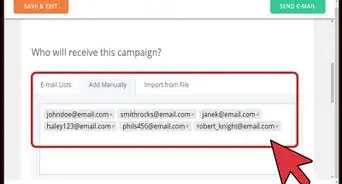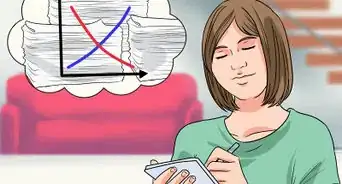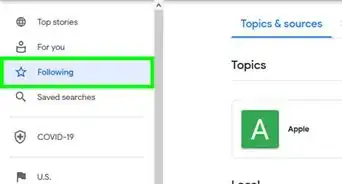This article was co-authored by Janet Peischel and by wikiHow staff writer, Jessica Gibson. Janet Peischel is a Writer and Digital Media Expert and the Owner of Top of Mind Marketing. With more than 15 years of consulting experience, she develops content strategies and builds online brands for her clients. Prior to consulting, Janet spent over 15 years in the marketing industry, in positions such as the Vice President of Marketing Communications for the Bank of America. Janet holds a BA and MA from the University of Washington.
There are 10 references cited in this article, which can be found at the bottom of the page.
This article has been viewed 623,489 times.
These days, everyone seems to have a newsletter! Writing one is simple, but with a few tricks you can make your newsletter fantastic. As long as you keep it interesting and informative, your audience will have a reason to read. It might help to think about the newsletters you open and read—they're probably useful, to the point, and personalized. Check out some of these useful techniques for your next newsletter.
Steps
Community Q&A
-
QuestionShould a newsletter normally contain picture attachments?
 Community AnswerIt doesn't have to, but pictures are always an enhancement if they are of good quality and relevant. They can add an extra dimension to the text, and are powerful in evoking an emotional reaction: sympathy, anger, etc.
Community AnswerIt doesn't have to, but pictures are always an enhancement if they are of good quality and relevant. They can add an extra dimension to the text, and are powerful in evoking an emotional reaction: sympathy, anger, etc. -
QuestionHow do I write a newsletter for an NGO who's aim is to help women?
 Community AnswerFocus on the concept of work the NGO is doing for women. Highlight recent work, future goals and the people doing and benefiting from the work.
Community AnswerFocus on the concept of work the NGO is doing for women. Highlight recent work, future goals and the people doing and benefiting from the work. -
QuestionCan we put advertisement in it?
 Community AnswerPaid advertisements in a newsletter can be acceptable. Be sure the advertisement is appropriate and relevant to the target market of your newsletter. Having paid advertisements is also a helpful way to defer the cost of producing the newsletter.
Community AnswerPaid advertisements in a newsletter can be acceptable. Be sure the advertisement is appropriate and relevant to the target market of your newsletter. Having paid advertisements is also a helpful way to defer the cost of producing the newsletter.
References
- ↑ Janet Peischel. Digital Media Expert. Expert Interview. 30 March 2021.
- ↑ https://www.nngroup.com/articles/email-subject-lines/
- ↑ https://www.vic.gov.au/create-and-manage-email-marketing-campaigns-digital-standards
- ↑ https://owl.purdue.edu/owl/general_writing/personal_correspondence/newsletters.html
- ↑ https://www.entrepreneur.com/article/279239
- ↑ https://youtu.be/06H4nL9H2Dk?t=485
- ↑ https://youtu.be/06H4nL9H2Dk?t=316
- ↑ https://www.inc.com/dakota-shane/how-to-write-an-email-newsletter-your-audience-will-actually-read.html
- ↑ Janet Peischel. Digital Media Expert. Expert Interview. 30 March 2021.
- ↑ https://www.entrepreneur.com/article/204844
- ↑ https://youtu.be/_c3dXgVoBHY?t=72
- ↑ https://owl.purdue.edu/owl/general_writing/personal_correspondence/newsletters.html
- ↑ Janet Peischel. Digital Media Expert. Expert Interview. 30 March 2021.
- ↑ https://owl.purdue.edu/owl/general_writing/personal_correspondence/newsletters.html
- ↑ https://owl.purdue.edu/owl/general_writing/personal_correspondence/newsletters.html
About This Article
If you want to write a good newsletter, you’ll need to make sure the writing is interesting, relevant, and easy to read. Think about who your audience will be when you're picking your topics since some material will appeal more to certain demographics than to others. Once you decide on your content, split your newsletter up into different sections, like a response section, letters to the editor, industry news, and feature articles, to keep your information varied and interesting. To draw your readers' attention to the different sections, write interesting headlines with powerful action verbs that will grab their attention. Before sending the newsletter out, make sure to proofread it for spelling and grammar issues as well as consistency of tone and voice. To learn how to research topics for your newsletter, keep reading!
